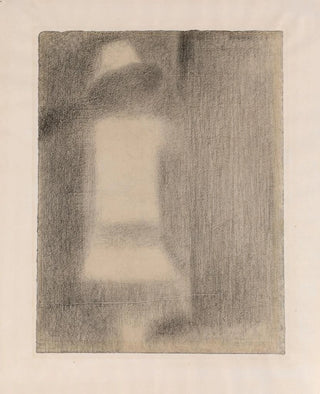Art print | Child in White - Georges Seurat


View from behind

Frame (optional)
The artwork "Child in White" by Georges Seurat, painted in 1883, stands as a true masterpiece of Pointillism, an innovative technique that has left a lasting mark on art history. In this painting, a young boy dressed in a white tunic is depicted with a softness and delicacy that immediately captivate the viewer's attention. The light, skillfully orchestrated through meticulously applied touches of color, seems to dance around him, creating an atmosphere that is both serene and dreamlike. This painting, emblematic of Seurat's early years, embodies a poetic vision of childhood, where innocence and beauty meet in a striking visual harmony.
Style and uniqueness of the work
Seurat's style is unmistakable and distinguished by his scientific approach to color and light. In "Child in White," the viewer is immediately struck by the Pointillism technique, which involves juxtaposing small touches of pure color to create a coherent image from a distance. This process, far from being trivial, reflects an in-depth exploration of visual perception and color theory. The shades of white and pastel that envelop the young boy evoke infinite gentleness, while delicate shadows add subtle depth to the composition. The work does not merely depict a child; it evokes a sense of escape, an invitation to immerse oneself in a world where time seems suspended, where every detail matters, and where each color tells a story.
The artist and his influence
Georges Seurat, an iconic figure of the Neo-Impressionist movement, established himself as a pioneer of artistic modernity. His influence is felt not only in the realm of painting but also in the evolution of artistic techniques. By developing Pointillism, he paved the way for many artists who sought to explore the limits of color and light. Seurat was also a forerunner in using color as a means of emotional expression, transforming the way artists approached representation. His work has inspired generations of artists, helping to shape the artistic landscape of the 20th century.

Matte finish

View from behind

Frame (optional)
The artwork "Child in White" by Georges Seurat, painted in 1883, stands as a true masterpiece of Pointillism, an innovative technique that has left a lasting mark on art history. In this painting, a young boy dressed in a white tunic is depicted with a softness and delicacy that immediately captivate the viewer's attention. The light, skillfully orchestrated through meticulously applied touches of color, seems to dance around him, creating an atmosphere that is both serene and dreamlike. This painting, emblematic of Seurat's early years, embodies a poetic vision of childhood, where innocence and beauty meet in a striking visual harmony.
Style and uniqueness of the work
Seurat's style is unmistakable and distinguished by his scientific approach to color and light. In "Child in White," the viewer is immediately struck by the Pointillism technique, which involves juxtaposing small touches of pure color to create a coherent image from a distance. This process, far from being trivial, reflects an in-depth exploration of visual perception and color theory. The shades of white and pastel that envelop the young boy evoke infinite gentleness, while delicate shadows add subtle depth to the composition. The work does not merely depict a child; it evokes a sense of escape, an invitation to immerse oneself in a world where time seems suspended, where every detail matters, and where each color tells a story.
The artist and his influence
Georges Seurat, an iconic figure of the Neo-Impressionist movement, established himself as a pioneer of artistic modernity. His influence is felt not only in the realm of painting but also in the evolution of artistic techniques. By developing Pointillism, he paved the way for many artists who sought to explore the limits of color and light. Seurat was also a forerunner in using color as a means of emotional expression, transforming the way artists approached representation. His work has inspired generations of artists, helping to shape the artistic landscape of the 20th century.






